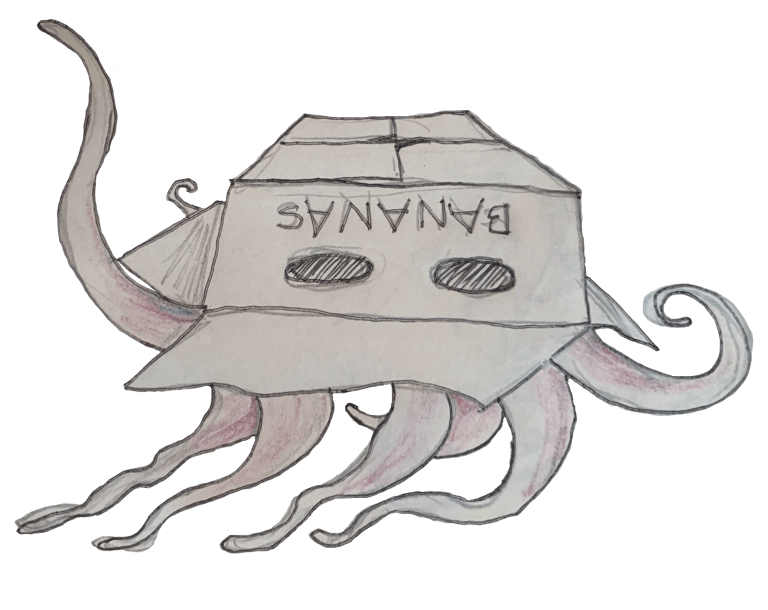Our Research Story
OUR GUIDING PRINCIPALS FOR RESEARCH
- Teachers and students are research partners with strong intuitions about what works.
- Teacher modeling and messaging to take creative risks is a key factor and must be supported.
- The beliefs and mindsets that underlie creative action must be considered.
- Artistic modalities are powerful levers to understand and enable equity, justice, and inclusion at every level of education.
Mixing different research methods can provide a richer understanding about the complexity of creativity, teaching, and learning.
OUR RESEARCH STORY
We have found a multi-tool to be a fitting metaphor for the diverse teaching skills that arts integration cultivates. Through practice, teachers can incorporate their creative tools in new responsive and adaptive ways that fuel their curiosity and catalyze their learning. That process models for students how our hands, our voices, our bodies, and our senses for observation can be valuable creative resources. Process-oriented and equity-driven arts integration cultivates those creative learning tools for learners of all ages.

We conceptualize creative teaching in arts integration as the combination of the knowledge, skills, and beliefs necessary to generate learning experiences that build students’ creative and academic agency, metacognition, and resilience. Our research across 8 years focused on diverse teachers, students, and school communities and resulted in more than a dozen published studies and led to our understanding of how to support teachers and students best. We have found that a blend of online and face-to-face training in creative teaching for arts integration can support the creative development, professional growth, and overall well-being of teachers in their profession. That teacher development is essential for students’ creative, academic, and agentic growth.

A Dramatic Confrontation of Frames
The two powerful factors to leverage teacher engagement and sustainability in arts integration are teachers self-beliefs about their own potential as creative teachers, their observations of students’ creative engagement, and a school organizational culture that values and supports the creativity of teachers and students.
Cultivating Sustainable School Culture
Schools implementing arts integration schoolwide benefit from the time and effort to develop a unifying framework highlighting the most valued aspects of student development, such as creativity. Arts integration training can contribute to increased professional enjoyment and openness to growth and enhanced relational trust across faculty and administration.
Making Metacognition, Modeling, and Creative Thinking Visible
Little work has been done to observe metacognition and creative thinking in classrooms to help us understand how these complex processes can be fostered in learning environments. This study illustrates a new approach and found large differences in carefully designed arts integrated learning environments compared to traditional teacher-directed classroom instruction.
Teachers' Creative Skill Development with Metaphor
This study represents a rare, and thus early, exploration of creative multimodal metaphor in the educational context, starting first with teachers. We build on the premise that skill development in metaphor can support multidisciplinary instructional design and culturally relevant and responsive teaching for educators. This study found large effects in teachers' creative development with skill alongside an increased capacity to integrate metaphor into classroom instruction.

Mistakes Can Be Beautiful
Creative engagement in arts integration is both internal for the student and interpersonal across a whole class, presenting important opportunities for self-expression, taking risks and making mistakes, and developing greater motivation and engagement in learning.
Creative Ideation Meets Relational Trust
There is a strong link between students’ creative ideation and their sense of support and positive relationship with their teacher; however, the link is twice as strong for creative ideation related to literary ideas when compared to non-academic inventive creative thinking. Students’ relationships with teachers may be strengthened if teachers encourage and recognize creative ideation about non-academic content and topics.
Creative Engagement and Embodied Metaphor
By branching out into multiple disciplinary perspectives, including affective neuroscience and educational psychology, our notion of student engagement in education should include the creative meaning-making process and incorporate embodied and affective experiences. To build a sense of autonomy, belonging, and competency, let students use their bodies and creative thinking to grapple with the meaning of complex and abstract ideas across content areas, such as science, math, and history.

ArtCore Project Final Grant Report
According to project evaluation findings, arts integration experiences across Grades 6–8 in different subject areas, especially English Language Arts and Social Studies, resulted in a substantial and statistically significant 23% improvement in English language arts proficiency and double the average growth compared to peers who did not receive arts integration.
Reflection on the Creative Process
Students’ creative self-efficacy, self-concept, and metacognition linked various aspects of their creative potential to their successful creative production of novel imaginary creatures. Developing students self-beliefs and their understanding of and practice with the creative process is a key to their creative development in arts integration.
Becoming Creative Agents
The majority of students demonstrated a decline in creative thinking across early adolescence in middle school. Students demonstrating growth also had stronger academic and creative outcomes, higher engagement in school, and a stronger sense of agency in school.
Student Agency at the Crux
Students’ sense of agency across the middle to high school transition was a strong protective factor against disengagement and poor attendance and for higher academic achievement.
Creative Engagement in Drama-based Instruction
Embodied and dramatic enactment in learning across middle and high school grades and subject areas (from science to health) activates all aspects of creative engagement. Students’ creativity and belonging are consistent across grade levels, and autonomy and competency appears more gradually as students age
Creativity, Goals, and the Possible
Motivational goal orientations, such as mastery versus performance orientation, relates to our creativity and how we view the possible. Drawing on classic theories of achievement goals, this chapter discusses the ways that goal orientations interact with our creative mindsets and creative confidence within the different areas of creative action we take.
The Leading Role of Original Thinking in Adolescence
How does divergent thinking actually develop as a way to approximate creative potential of young people? Students’ persistence to produce lots of ideas seemed to be most influential in students’ originality. However, originality influenced growth in both fluency and flexibility as well as 8th grade creative production, metacognition, and self-beliefs. Developing ideas that are high in originality requires effort, time, and strategy across different contexts, which can be developed with intention and practice.

Middle Level Educators Using Drama
When teachers engage in theater-based arts integration training, it is a highly emotional experience from feeling fear and embarrassment to excitement and pride. Students feel the same full spectrum of emotions, but overall enjoy it. Teachers’ emotional experience in training is essential to understand the scaffolding needed, conditions that need to be set, the risks that students take to creatively engage, and benefits experienced of deepening relationships with one another and connections to the content.
Stretching the Affordances for Networked Professional Learning
What makes impactful networked online professional development for rural teachers learning creativity and arts integration? This study describes the development and testing of the makeSPACE hybrid online and in-person teacher training experience focused on the creative development of rural educators and their preparation to integrate creativity and the arts across the curriculum. The results reveal innovations to teach complex topics and train for new practices, like creativity, making online learning more experiential and connected for relevance and engagement.
How am I a Creative Teacher?
Through a blend of online and face-to-face training teachers developed stronger growth mindset beliefs about creativity and greatly reduced their fixed mindsets. They also enhanced their creative self-efficacy in teaching and reduced their creative anxiety. Those factors set the stage for implementing new creative routines and lessons in their classroom, taking bigger creative risks with their students, and observing students’ engagement in learning increase.

Generating Buoyancy in a Sea of Uncertainty
This policy-to-practice paper funded by the International Baccalaureate presents findings from a wide range of literature on academic resilience in primary and secondary education. Every student faces setbacks and challenges in school. Academic buoyancy is the ability to fail well, fail forward, and bounce back from those inevitable challenges. Some students face much more serious adversity in their school experience alongside challenges at home or in their community. This paper describes key insights from research on the factors that build students’ resilience to overcome setbacks alongside promising practices to improving students’ resilience.
Teachers’ Creative Agency, Well-Being & Joy in Teaching
Creative development can materialize more resilience and joy and less stress for people, including teachers, but these connections have received little attention. What do we know about teachers’ creative agency during the COVID-19 pandemic, a period of intensified stress, anxiety, and disconnect? The results of this study fill in this gap, showing the makeSPACE PD experience supported (a) an increase in teachers’ creative agency, empathy, joy, buoyancy, and support in teaching during the pandemic and (b) a reduction in their secondary traumatic stress. Results also illustrated a variety of personalized pathways for this development.
Positive Creativity is Principled Creativity
This essay introduces an action-oriented framework to clarify and promote a principled approach to creativity in education. A principled approach to creativity refers to the design and implementation of positive creative educational endeavors, which are guided by a set of agreed-upon commitments aimed at making a positive contribution to the learning and lives of others.
Creative Development and the Possible
Creative development across the lifespan relates to how a person adapts to the changing circumstances of life with agency, a resilient and growth-oriented attitude, and a sense of possibility for themselves and their world. This chapter explores this sociocultural process where creative development of one individual builds from and contributes to the creativity of others.
Creative Development on a Beginner-to-Emerging Expert Continuum
This framework can support educators and program developers to understand how 21st century skills, such as creativity, develop in learning contexts and opportunities. With effort and feedback, individuals make unique connections and meaningful insights, experiment with possibilities, reflect on the learning process, and grow more confident to take risks. This growth requires metacognitive awareness of strengths, strategies, and experience. The ability to apply knowledge and experience to challenges and capitalize on insights is a defining feature of creativity development.

Growth Mindset Thinking and Beliefs in Teaching and Learning
This policy-to-practice paper funded by the International Baccalaureate presents findings from a wide range of literature on growth mindset in primary and secondary education. Every person carries a mindset, or implicit view, about the nature and origin of their own ability, and the ability of others. Students holding a fixed mindset about ability believe that intelligence and abilities are innate and unalterable. Students holding a growth mindset believe that intelligence and abilities are malleable and can be developed with effort. This paper describes key insights from research on growth mindset alongside promising practices to improving students’ growth mindset beliefs and thinking.
Making the Abstract Explicit: Metacognition in Teaching and Learning
This policy-to-practice paper funded by the International Baccalaureate presents findings from a wide range of literature on metacognition in primary and secondary education. When we do purposeful thinking about our thinking we engage in metacognition. Metacognition is the main driver for self-regulation and powerful factor in academic success. Learners tap into their prior experiences to develop a plan, achieve a goal, select strategies, monitor progress, and reflect on what and how they learned. Imagine yourself as a student. This paper describes key insights from research on metacognition alongside promising practices to improving students’ metacognition in learning.
Academic Buoyancy and Resilience for Diverse Students
This policy-to-practice paper funded by the International Baccalaureate presents findings from a wide range of literature on academic resilience in primary and secondary education. Every student faces setbacks and challenges in school. Academic buoyancy is the ability to fail well, fail forward, and bounce back from those inevitable challenges. Some students face much more serious adversity in their school experience alongside challenges at home or in their community. This paper describes key insights from research on the factors that build students’ resilience to overcome setbacks alongside promising practices to improving students’ resilience.
Latinx Middle Schoolers Writing for Social Justice
This study reports on the experiences of 15 Latinx sixth-grade students in Los Angeles who participated in a yearlong journalism-based media literacy program embedded in their social studies classes. Students researched, interviewed, wrote, and published articles on the Internet about social justice themes, like immigration, racism, and LGBTQ rights. The intervention and study are framed by critical pedagogy and social justice pedagogy, illustrating new ways educators can empower young people by fueling their agency and advocacy about the issues they care about.
Becoming Self-Determined to Write Through Journalism
This study applies self-determination theory in the design and developmental research of an approach that integrates journalistic interviews and writing practices into typical middle school student English language arts and social studies curricula. Students reported positive perceptions and attitudes, high levels of individual interest, intrinsic motivation, and flow experiences in the writing process, and high levels of autonomy, competency for critical thinking, and relational support.
The Two I’s in Motivation: Collective Self-Efficacy in Science
Our understanding of motivational constructs such as self-efficacy has mostly been based on studies of predominantly White samples, neglecting the perspectives and experiences of students from historically marginalized groups underrepresented in STEM academic and career pathways. We examined science motivation in six high school students of color who participated in a near peer mentoring program, called My STEM Story. We found that science self-efficacy centers around forming and maintaining interpersonal connections through proxy agency and help-seeking, which contrasts with individualistic approach to self-efficacy that dominates.
Our Services for Research & Speaking Engagements
If you are looking for a research partner to study, evaluate, or design educational or workplace programs aimed at creative engagement and development, reach out to us and start a conversation. Our team is skilled in qualitative and quantitative methodologies to address a variety of curiosities you may have.
If you are looking for a dynamic speaker for an interactive and inspirational keynote address on creativity and holistic well-being for your organization or event, please reach out about your interest. Dr. Ross Anderson recently provided a keynote address for the Oregon After School and Summer for Kids 2024 Spring Conference.
Creative Engagement Lab research is led by Dr. Ross C. Anderson. Watch his recent TEDx talk and download his Curriculum Vitae below to get to know him and his work.
